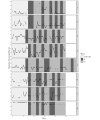Efficacy of a Virtual Reality Biofeedback Game (DEEP) to Reduce Anxiety and Disruptive Classroom Behavior: Single-Case Study
- PMID: 32207697
- PMCID: PMC7139423
- DOI: 10.2196/16066
Efficacy of a Virtual Reality Biofeedback Game (DEEP) to Reduce Anxiety and Disruptive Classroom Behavior: Single-Case Study
Abstract
Background: Many adolescents in special education are affected by anxiety in addition to their behavioral problems. Anxiety leads to substantial long-term problems and may underlie disruptive behaviors in the classroom as a result of the individual's inability to tolerate anxiety-provoking situations. Thus, interventions in special needs schools that help adolescents cope with anxiety and, in turn, diminish disruptive classroom behaviors are needed.
Objective: This study aimed to evaluate the effect of a virtual reality biofeedback game, DEEP, on daily levels of state-anxiety and disruptive classroom behavior in a clinical sample. In addition, the study also aimed to examine the duration of the calm or relaxed state after playing DEEP.
Methods: A total of 8 adolescents attending a special secondary school for students with behavioral and psychiatric problems participated in a single-case experimental ABAB study. Over a 4-week period, participants completed 6 DEEP sessions. In addition, momentary assessments (ie, 3 times a day) of self-reported state-anxiety and teacher-reported classroom behavior were collected throughout all A and B phases.
Results: From analyzing the individual profiles, it was found that 6 participants showed reductions in anxiety, and 5 participants showed reductions in disruptive classroom behaviors after the introduction of DEEP. On a group level, results showed a small but significant reduction of anxiety (d=-0.29) and a small, nonsignificant reduction of disruptive classroom behavior (d=-0.16) on days when participants played DEEP. Moreover, it was found that the calm or relaxed state of participants after playing DEEP lasted for about 2 hours on average.
Conclusions: This study demonstrates the potential of the game, DEEP, as an intervention for anxiety and disruptive classroom behavior in a special school setting. Future research is needed to fully optimize and personalize DEEP as an intervention for the heterogeneous special school population.
Keywords: adolescents; anxiety; applied game; attention-deficit/hyperactivity disorder (ADHD); autism spectrum disorder (ASD); disruptive behavior; serious games; single-case study; special education.
©Rineke Bossenbroek, Aniek Wols, Joanneke Weerdmeester, Anna Lichtwarck-Aschoff, Isabela Granic, Marieke M J W van Rooij. Originally published in JMIR Mental Health (http://mental.jmir.org), 24.03.2020.
Conflict of interest statement
Conflicts of Interest: None declared.
Figures



References
-
- van Rijswijk CM. Indicatiestelling speciaal onderwijs 2003/2004. De indicatiecommissies van cluster vier [Needs assessment special education 2003/2004. The needs assessment committee of cluster four] Den Haag, The Netherlands: Landelijke Commissie Toezicht Indicatiestelling; 2004.
-
- Vonck E, Scholte E. Angstig depressieve kinderen in het speciaal onderwijs [Anxious depressed children in special education] Amsterdam, The Netherlands: SWP; 2008.
-
- van Steensel Francisca J A, Bögels Susan M, Perrin Sean. Anxiety disorders in children and adolescents with autistic spectrum disorders: a meta-analysis. Clin Child Fam Psychol Rev. 2011 Sep;14(3):302–17. doi: 10.1007/s10567-011-0097-0. http://europepmc.org/abstract/MED/21735077 - DOI - PMC - PubMed
LinkOut - more resources
Full Text Sources

